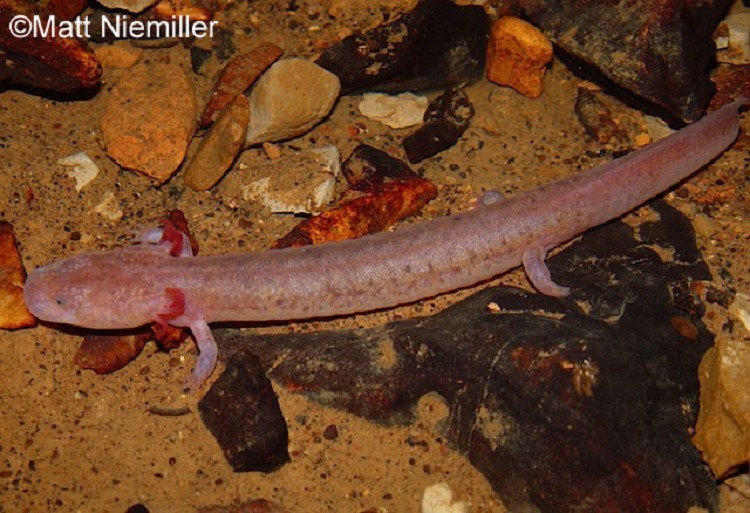Tennessee Cave Salamander
Gyrinophilus palleucusThe Tennessee Cave Salamander is found in a restricted range of limestone cave systems in Tennessee, Alabama, and Georgia. Two subspecies, separated by range, are recognized: Big Mouth Cave Salamander (G. p. necturoides) and Pale Salamander (G. p. palleucus).
Description: A large salamander (4.0 to 7.5 inches in length) with small eyes, lack of eyelids, wide head, spatulate snout, and bright red feathery, external gills. Overall coloration is salmon to pale pink with a pale belly. G. p. necturoides is dark and heavily spotted and G. p. palleucus is pale flesh-pink in color.
Similar Species: Berry Cave Salamander has a larger head and body and has a throat stripe; also separate range.
Habitat: Occurs in caves and sinkholes containing streams.
Diet: Crustaceans, earthworms, beetles, stoneflies, mayflies, and other aquatic insects.
Breeding information: Very little known. Most Tennessee Cave Salamanders spend their lives in the larval stage; hence they do not migrate out of the cave environment. Females lay eggs in fall or early winter based upon sightings of small hatchlings in winter. Egg laying is suspected to be similar to Spring Salamanders, which occurs under large rocks.
Status in Tennessee: In 1994 TWRA listed the Tennessee Cave Salamander as Threatened. Populations are particularly vulnerable to water pollution from agricultural runoff and septic tanks.
Fun Facts:
- The Tennessee Cave Salamander was designated our state amphibian in 1995.
Best places to see in Tennessee: Cave systems in central and eastern TN.
